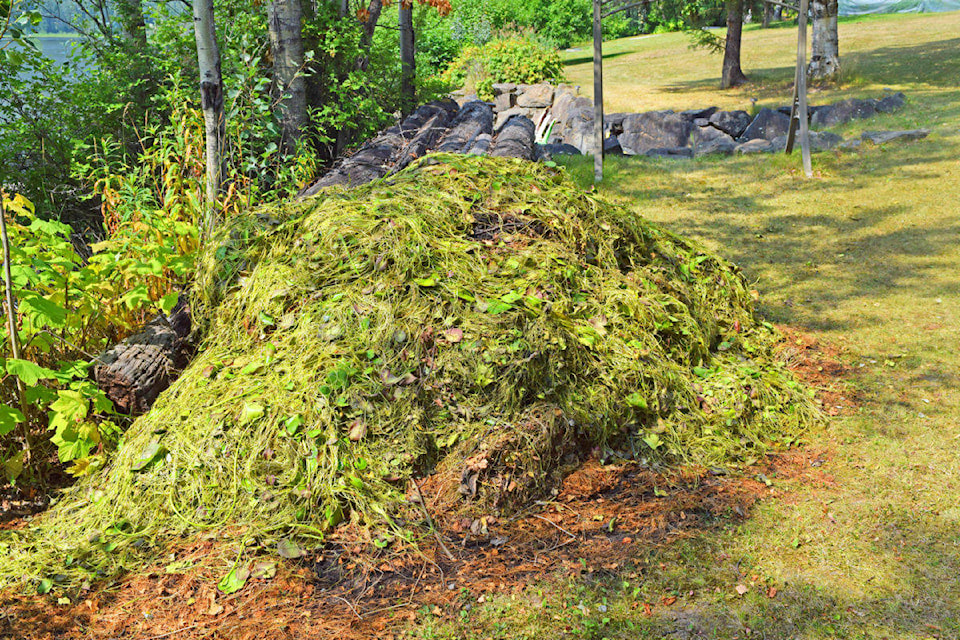Don’t let its name fool you — yellow floating heart is no joke.
For years the invasive weed has plagued Seymour Lake.
Now the Province is stepping in to help control the weed’s spread.
Poppy Dubar, chair of the Seymour Lake Conservation Society (SLCS) board of directors, explained that the weed was first introduced to the lake by accident nearly two decades ago.
“Initially it was planted in front of a lady’s house about 20 years ago, [then] a subsequent owner excavated the lakefront and it fragmented into a lot of different satellite populations.”
The invasive species spread rapidly, and within years had begun to encroach on the public beach area.
Now, after years of petitioning the Province, the Ministry of Forests, Lands, Natural Resource Operations and Rural Development has committed to a multi-faceted approach of both hand-pulling the weeds from the water, as well as mechanical means of removal from the lake.
This includes an invasive plant expert contracted by the Province going out onto the lake with an assistant to mechanically cut the weed using a motor and rakes to catch the subsequent fragmentation.
Another aspect of the approach is funding provided by the Wetzin’Kwa Community Forest Corporation (WCFC) to the SLCS so they could hire an assistant to help with the project.
The original WCFC funding was used to hire students in previous attempts to slow the spread of the weed, however Dubar explained the SLCS had enough left over between that and the Public Conservation Assistance Fund to cover the position.
“The government was going to have a guy come in solo which — I don’t know how you could do the job solo,” she said.
“I don’t think you could.”
Previously the Province had floated the idea of using a non-permeable black mat at the public portion of the beach to try to stop the spread of the plant, but Dubar said this was proven to not be a good idea for a number of reasons.
“They require too much maintenance and require a foreman to drag [them] out of the water [to] clean yearly — they’re just not anything that our [town] could deal with.”
Another option that was previously suggested was the use of diquat, an acquatic herbicide commonly used on invasive species.
But as Dubar explained, this had a host of issues as well, such as the fact that the herbicide tends to not do well in murky water (such as the water in Lake Seymour) and that the herbicide has to be applied directly to dry leaves.
“You can imagine all the winds we’ve had this year … the window of calm weather in order to do any spraying would be really, really slim,” said Dubar, adding that many people use the lake for drinking water.
“I just don’t think it would fly.”
She said the project isn’t aimed at eradicating the weed completely — which would be nearly impossible — but rather keeping the plant confined to as small a portion of the lake as possible, as well as stopping it from spreading to other lakes in the area.
“If the plant is never allowed to flower it will weaken and its mass will be reduced [over time] — it’s not like we’re just putting a Band-Aid on a huge open wound.”
